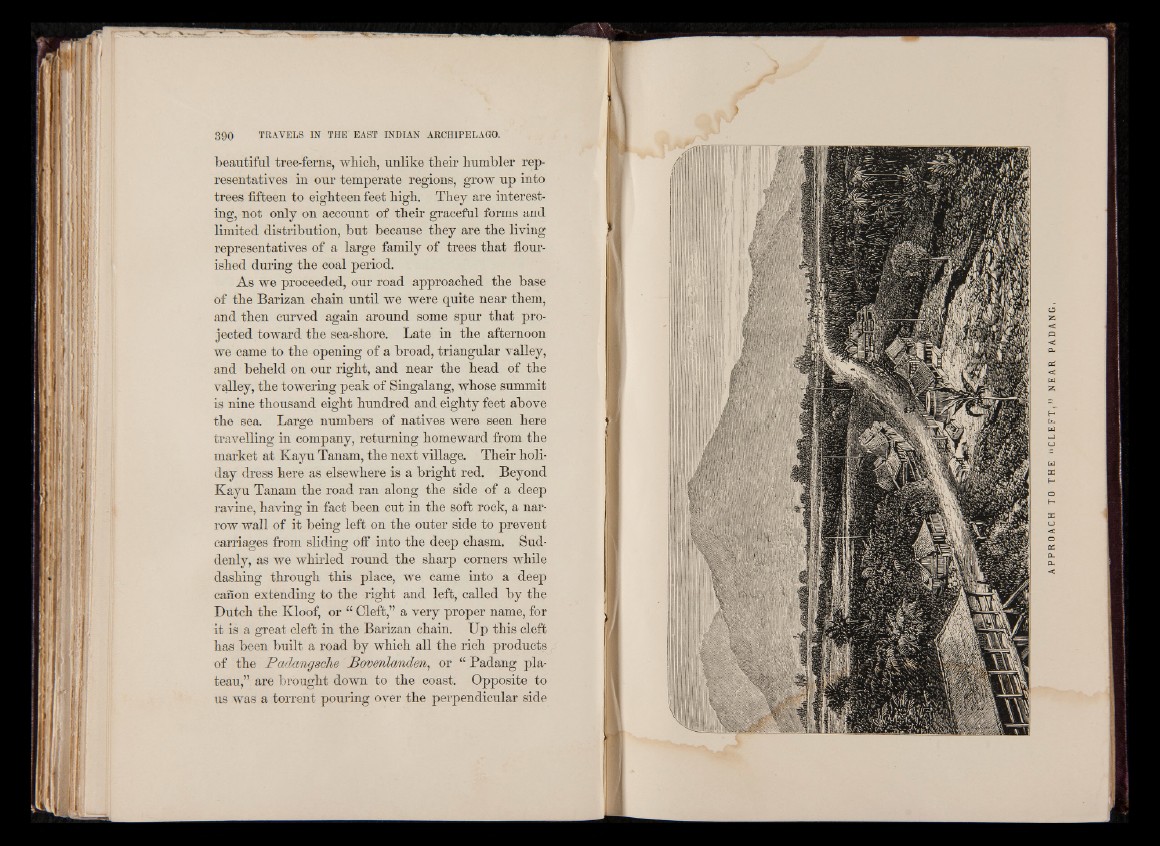
beautiful tree-ferns, which, unlike their humbler representatives
in our temperate regions, grow up into
trees fifteen to eighteen feet high. They are interesting,
not only on account of their graceful forms and
limited distribution, but because they are the living
representatives of a large family of trees that flourished
during the coal period.
As we proceeded, our road approached the base
of the Barizan chain until we were quite near them,
and then curved again around some spur that projected
toward the sea-shore. Late in the afternoon
we came to the opening of a broad, triangular valley,
and beheld on our right, and near the head of the
valley, the towering peak of Singalang, whose summit
is nine thousand eight hundred and eighty feet above
the sea. Large numbers of natives were seen here
travelling in company, returning homeward from the
market at Kayu Tanam, the next village. Their holiday
dress here as elsewhere is a bright red. Beyond
Kayu Tanam the road ran along the side of a deep
ravine, having in fact been cut in the soft rock, a narrow
wall of it being left on the outer side to prevent
carriages from sliding off into the deep chasm. Suddenly,
as we whirled round the sharp corners while
dashing through this place, we came into a deep
canon extending to the right and left, called by the
Dutch the Kloof, or “ Cleft,” a very proper name, for
it is a great cleft in the Barizan chain. Up this cleft
has been built a road by which all the rich products
of the Padangsche Povenlanden, or “ Padang plateau,”
are brought down to the coast. Opposite to
us was a torrent pouring over the perpendicular side